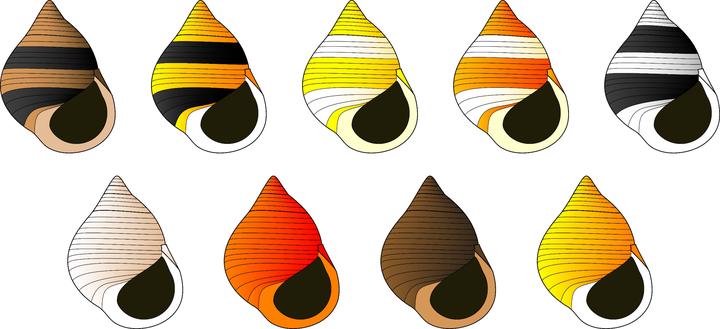Negative frequency-dependent selection maintains shell banding polymorphisms in two marine snails (Littorina fabalis and Littorina saxatilis)"
 Image credit: Daniel Estévez-Barcia
Image credit: Daniel Estévez-BarciaAbstract
The presence of shell bands is common in gastropods. Both the marine snails Littorina fabalis and Littorina saxatilis are polymorphic for this trait. Such polymorphism would be expected to be lost by the action of genetic drift or directional selection, but it appears to be widespread at relatively constant frequencies. This suggests it is maintained by balancing selection on the trait or on a genetically linked trait. Using long time series of empirical data, we compared potential effects of genetic drift and negative frequency-dependent selection (NFDS) in the two species. The contribution of genetic drift to changes in the frequency of bands in L. fabalis was estimated using the effective population size estimated from microsatellite data, while the effect of genetic drift in L. saxatilis was derived from previously published study. Frequency-dependent selection was assessed by comparing the cross-product estimator of fitness with the frequency of the polymorphism across years using a regression analysis. Both studied species showed patterns of NFDS. In addition, in L. fabalis, contributions from genetic drift could explain some of the changes in banding frequency. Overdominance and heterogeneous selection did not fit well to our data. The possible biological explanations resulting in the maintenance of the banding polymorphism are discussed.